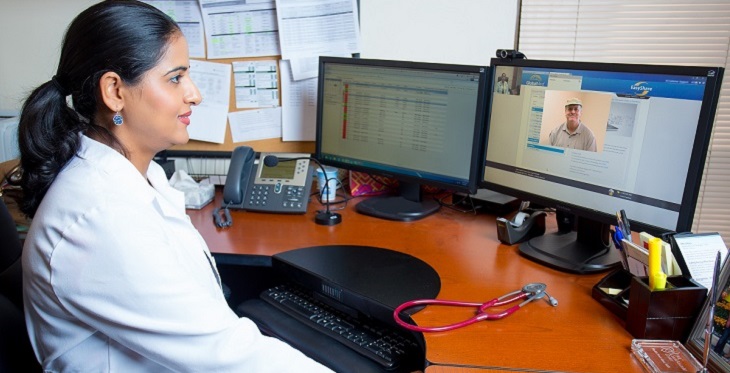Tucson Medical Center: Telemedicine Getting Good Reviews from Patients in Rural Arizona

When endocrinologist Shubh Kaur, MD, was first approached to consider telehealth visits with patients in the Douglas and Safford areas, she was immediately intrigued.
It seemed an appropriate solution for patients whose zip codes made it difficult to get specialty care without a lengthy drive.
But she was also new to the technology. “I had an open mind about what the interaction would be like, but I was very interested in the question of patient experience, and whether it would be effective in building relationships.”
So far, she is pleased to report, patients have given good reviews on their feedback forms.
Dr. Kaur was contacted for the service by Tucson Medical Center – the founding member of the Southern Arizona Hospital Alliance, a group of five independent, nonprofit community hospitals in Benson, Bisbee, Safford, Tucson and Willcox. The group banded together to build stronger alignment to better serve patients and allow for greater efficiencies in purchasing, insurance and electronic medical records.
Recognizing the need for expanded access to specialty care in some of the areas, TMC reached out to the Arizona Telemedicine Program, operated by the University of Arizona, to work on expanding telehealth opportunities. TMC also surveyed the members of the Alliance to see what specialty care they most needed. Adult endocrinology was one of the most critical needs.
Dr. Kaur has provided weekly clinics for patients at the Copper Queen Community Hospital’s Douglas Medical Complex, as well as monthly clinics with Mt. Graham Regional Medical Center in Safford. A medical assistant at those locations is able to palpate a patient’s thyroid, for example, or provide medical interpretation for Spanish-language patients.
“For many residents of Safford and the Gila Valley, the two-hour drive to Tucson is a great challenge – so much so that they may forego needed specialty care,” said Mark Marchetti, CEO of Mt. Graham Regional Medical Center. “Through telemedicine, we are able to provide that care locally and help ensure that patients receive the medical services that they need.”
Hope Thomas, the network director of the Southern Arizona Hospital Alliance, predicted telehealth is in the midst of an evolution. “Right now, the change is really starting to happen in rural healthcare, but that’s going to evolve. More and more, urban consumers are going to be demanding it.”
Joanne Martin, strategy program manager for TMC, agreed. “It’s a time saver for both the patients and the providers because it provides the convenience of being able to share expertise without anyone having to leave their own environment.”
“There’s some room to grow on the reimbursement side, but it’s a really good model if you really care about providing the care the patient needs.”
That’s what has most impressed Dr. Kaur.
“I immediately liked the idea of being able to reach more patients, because there are so many patients with poorly controlled or complicated endocrine disorders, who never go to a specialist because it’s such a long drive and they have no other access to care,” she said. “It’s great to be able to help people, no matter their geography.”
Dr. Kaur said she doesn’t expect telemedicine will replace face to face visits in a clinic. “But I do think it is a really good option for certain conditions and for certain cases, and it’s clear that patients are responding that they would recommend this technology to others and would continue using it themselves. The feedback has been really very positive.”
